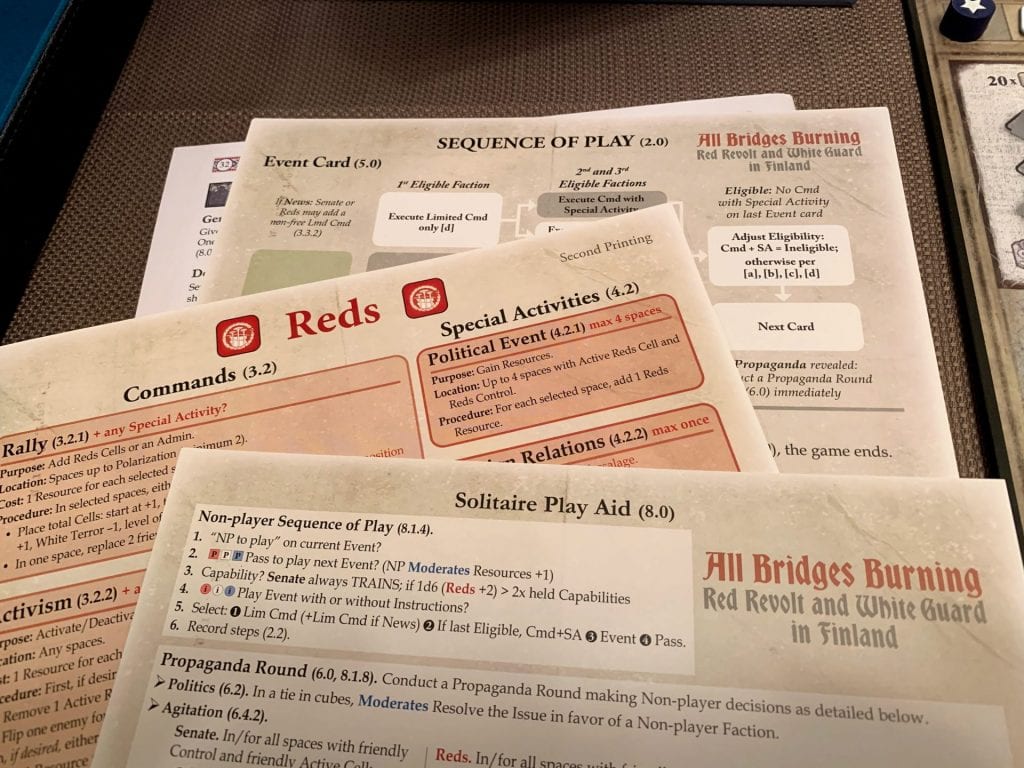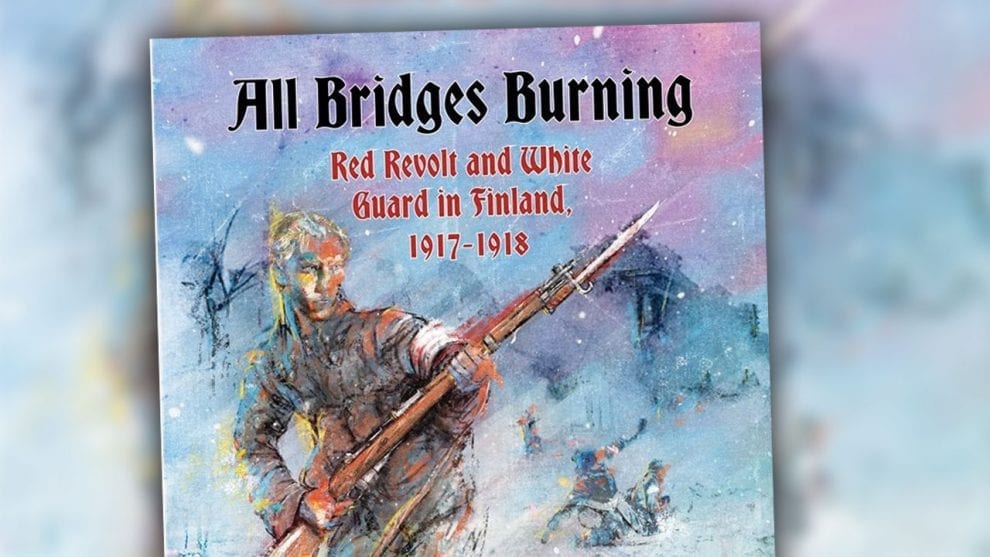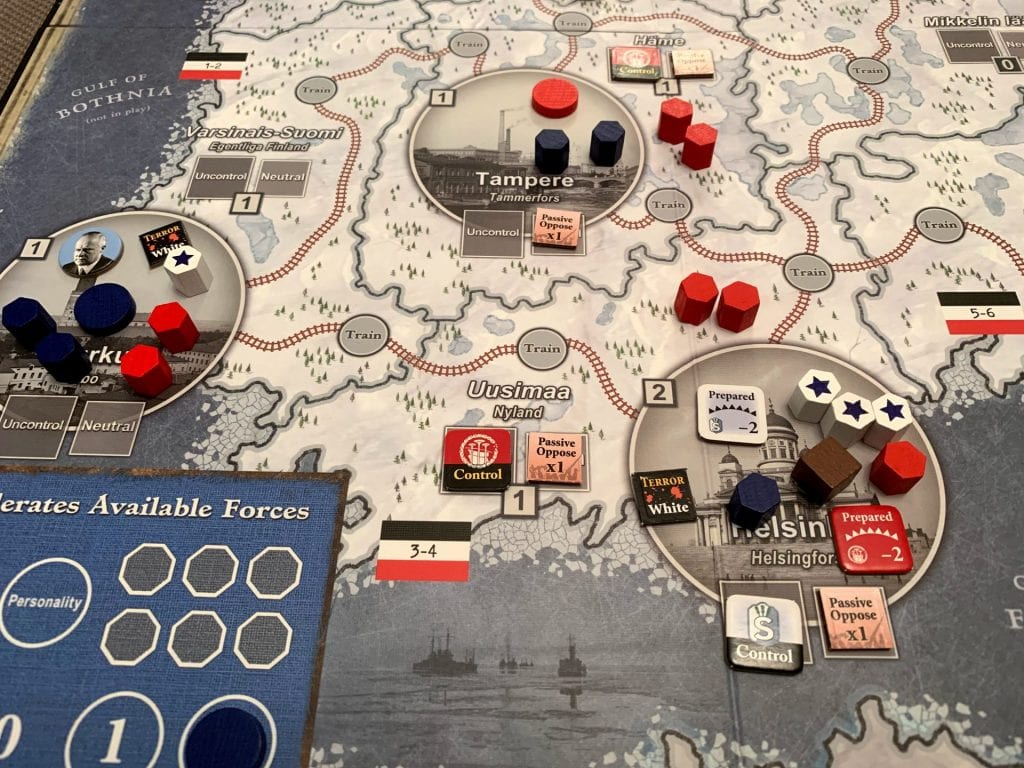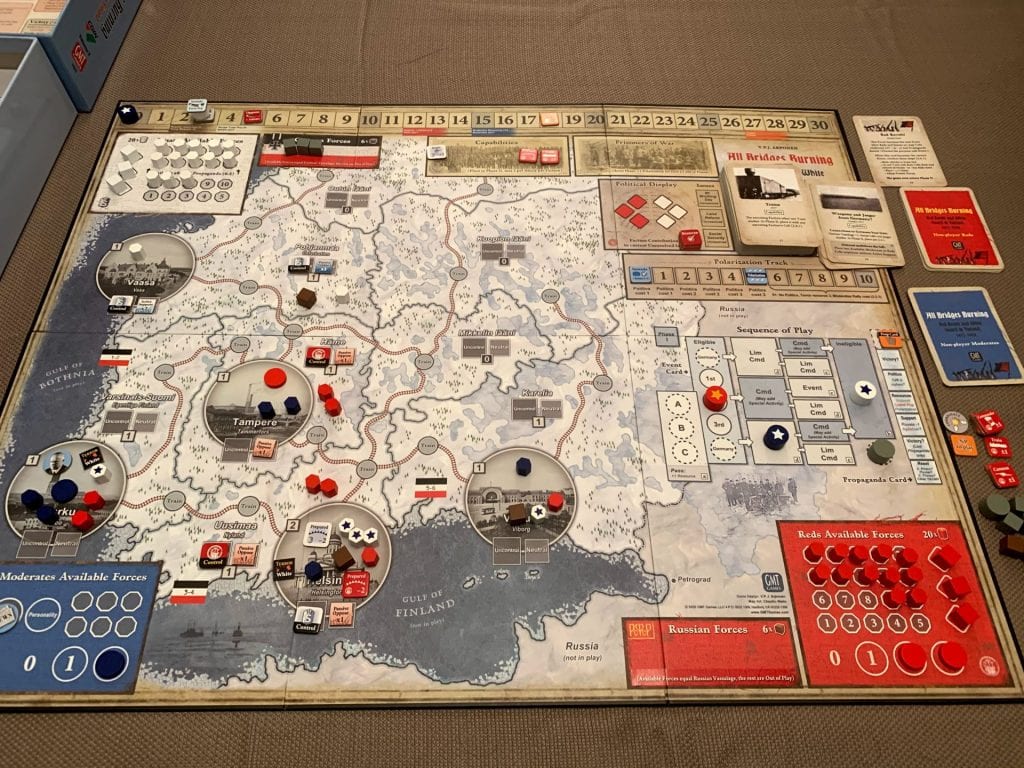Wargames generally take terrible situations and lay them out on the table for players to engage with. Sometimes these terrible situations, the pitting of person against person in bloody violence on a grand scale, is presented abstractly. Counters representing hundreds of soldiers occupy hexagons representing kilometers, and hours or days of violent conflict are represented with the roll of a die and the flip of a counter. There’s nothing wrong with these types of games. In fact, I think they’re excellent ways of demonstrating the complexity of human conflict in a manageable and understandable way.
After playing, engaging with, and enjoying a good wargame, it is hard to believe that a player could not say they know more about the conflict presented than beforehand (or at least the designer’s interpretation of that conflict, but that is another article altogether). Yet for how much I enjoy wargames for their ability to educate, to prompt reflection, and of course as a test of strategic or tactical thinking, there are times when I wish the more unpleasant side of what is represented is actually part of the design and therefore clear for all to see.
Enter the COIN series, COIN here referring to Counterinsurgency. Designed originally by Volko Ruhnke in 2012 with Andean Abyss: Insurgency and Counter-Insurgency Colombia, the COIN series has now expanded to 10 published games that focus on the political, economic, and social issues that are common to every war but often ignored by wargames. These games attempt to portray the wider conflict, and often multiple sides, in such a way that includes considerations of popular opinion, economic support, diplomacy, and sometimes, humanity. This means that COIN games are structurally very different from traditional wargames.
Straddling the line between wargame and Eurogame, the COIN series has the potential to be an excellent gateway between these two types of board games. And because COIN games offer interesting themes and larger player counts they can provide an opportunity to get friends involved from one side of the hobby to the other., That is if one can brave what on the surface seems like a difficult core system. It’s not, when the core mechanics are considered, but the chrome can add a lot, and that in turn makes some COIN games more approachable than others. All Bridges Burning: Red Revolt and White Guard in Finland, 1917-1918, thankfully, is on the approachable side of COIN games.
A Terrible War: All Bridges Burning’s Theme
All Bridges Burning covers a fascinating but often overlooked conflict. As Tsar Nicholas II abdicated and Russia began its descent towards chaos and revolution, the extremities of the Russian Empire were exposed to a power vacuum that held the potential for self-actualization. For the semi-autonomous Grand Duchy of Finland, nationalism and the drive for an independent Finland pushed many towards activism. Unfortunately, there was little agreement between Fins about the nature of a new Finnish state. The Reds sought to stage a working-class revolt, while the Whites, representing the Senate and those who previously held power, sought to reassert control and protect some conservative structures. At the same time, an amorphous group of moderates, individual journalists, politicians, poets, and notables, acted to defuse the violence that was brewing across their country, arguing for political reform and the survival of parliamentary democracy.
Outside forces were also involved. The Reds had the support (in a manner) of Russia, while Germany offered to support the Whites at a high cost. By January 1918 a bloody and terror filled civil war had broken out, and while it finally resolved in 1919, after the collapse of Germany in the First World War, as an independent republic with a constitution, it had come at the cost of some 30,000 Fins who had perished in battle, terror campaigns, and in prison camps.
Playing a COIN Game: All Bridges Burning’s Mechanics
COIN games focus on asymmetrical sides competing to complete their own objectives while preventing their opponents from completing theirs. In All Bridges Burning, the three sides have very different goals connected to a single track of political volatility. The Whites are attempting to gain control over cities while keeping German involvement low. The Reds want to carpet the country in opposition to the Whites and establish administrations, while keeping Russian involvement low. The Moderates want to earn resource points and keep terror low. The Whites and Reds are in for a more traditional war, while the moderates must earn resources by reporting on terror, passing political reforms, and keeping the intensity of the conflict low. All players can lose if outside forces gain too much control, so both sides must moderate the help they receive. All factions are tied to a central track of political volatility that increases with terror and violence and reduces when forces stand down. Balancing your own victory conditions with those of your opponents is difficult but reinforces the desperate situation all three sides faced during the conflict.
On each turn, the top event card is drawn, which would have been visible since last turn, and the next turn’s event card is also revealed and placed face up on the deck. Each side chooses in order how to act. Initial order is determined randomly, but each faction’s ability to act in subsequent turns will be impacted by what they do in the current round. It is an innovative system that might seem complicated at first glance. The first player may choose between enacting the event card, performing a Full Command (a major action in as many spaces as they can afford followed by a minor action) or a Limited Command (a major action in one area). What they choose will dictate what the other factions may choose and critically, dictates the player order for the next round. Choosing a Full Command actually forces that faction to sit out the next round entirely. Deciding how and when to commit to major actions or events, knowing what you might be allowing the following faction to do, is a fascinating mechanic that simultaneously limits player options and therefore analysis paralysis, while also allowing for long term planning.
Some actions are shared between factions, but others are unique. The Whites and Reds can both Rally, for instance, committing more forces to the board, while only the Moderates can Publish, earning resources based on popular figures and networks. There is a lot to take in when first-time players look at their Player’s Aid and see the number of possible actions and the step-by-step list accompanying each one. But the information is all there. The complexity will quickly drain away to reveal several distinct pathways to grow your faction, reduce your enemies, and plan for the future game state.
All Bridges Burning is split between two distinct sections. The first phase is based on building up forces to prepare for the coming war. This is the period of diplomacy, of political maneuvering, of recruiting and activating forces, and, of course, of terror campaigns. The second phase is war, with forces maneuvering and battling, journalists recording battles and getting those reports to the world, and of course, more terror. Each phase plays very differently, but the first flows well into the second. Any faction can win an instant victory if they manage their victory conditions during the two propaganda events in each phase of the game but, by and large, the victory will be settled by the fourth propaganda round.
A Good Look at a Bad War: How All Bridges Burning Feels
This is an entertaining, intense game. Playing a full three player game of All Bridges Burning can take a full evening, less with subsequent plays. But the evening will be filled with strategic decision-making, entertaining reverses, and crafty plays. The system is entirely learnable and teachable during a single game, though the amount of choices available to each faction should be gone over before new players are let loose on the board. The number of event cards, the way in which they are played, and the amount that can be done with Full and Limited Commands mean that there is a good deal of replayabilty and opportunity to develop strategies in All Bridges Burning. This is not a fast-paced game, but it is one that can keep a table quiet and contemplative while politics slowly give way to violence, and war inevitably comes crashing down on everyone’s plans.
All Bridges Burning is fun, deeply strategic, and thought-provoking. That third point is evident from the game’s decision to put terror campaigns, prison camps, and political maneuvering front and center. If any player has the opportunity to sit down and read through the manual and player’s guide, they will really see how the designer, V.P.J. Arponen, engaged with the history he attempted to gamify. Both books are full of design notes, historical references, and suggestions for further reading.
This approach, filling event cards and both included books with design notes and historical analysis, brings me to solitaire. All Bridges Burning, like all COIN games, are designed to be played as well alone as with a full table. All Bridges Burning is the game that got solitaire wargames to really click for me. Non-player factions are both controlled by decks of cards and a simple flowchart. These combined make for an engaging but ultimately relaxing experience. Playing solitaire really allows one to engage with the history being represented, and will do as well as any popular history to acquaint oneself with the war being played. That alone is a powerful thing that the COIN series and All Bridges Burning can offer.

A Note on Components: Quality and All Bridges Burning
I need to make a note about the components. As usual, GMT’s wargames are wonderfully crafted. The map is sturdy with beautiful and readable art. The event cards have period appropriate pictures. The individual pieces are made of wood or solid cardboard, and a game in play is colourful and readable. It’s generally a great package. Unfortunately, there were some misprints on the map, solitaire cards, and player aids. They are minor, but still exist. To correct this, GMT will send out a correction package with stickers that can be applied to the map and replacement cards. I’m glad for this, but unfortunately, I need to restick the stickers each time I open the map. It’s not a deal breaker by any stretch, and I’m still happy with the quality of the game, but it is important to note.
Conclusion: Should You Play All Bridges Burning?
The COIN series, and All Bridges Burning in particular, are unique games. I believe these games are worth exploring for both wargamers and gamers used to heavy euros. They might seem difficult, but they are entirely learnable and All Bridges Burning is on the easier side of things considering all 10 games in the COIN series. That these games engage openly with the horror of the wars they represent and that they force players to deal with these issues makes for powerful play. As a game, All Bridges Burning is entertaining and strategic. As a look at a historical conflict, it is intriguing. For myself, I am now entirely a convert to the COIN system and will be seeking out other games in the series that cover conflicts that interest me. I heartily recommend All Bridges Burning, and I hope this review has encouraged some who might be more reserved when it comes to a game of this scope to take the plunge. It will certainly be an interesting swim.















Add Comment